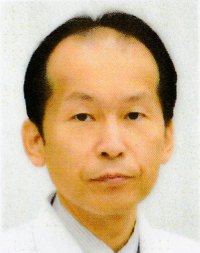Toshiro Iizuka1, Jin Ye Yeo2
1Department of Gastrointestinal Endoscopy, Tokyo Metropolitan Cancer and Infectious Diseases Center Komagome Hospital, Tokyo, Japan; 2AOE Editorial Office, AME Publishing Company
Correspondence to: Jin Ye Yeo. AOE Editorial Office, AME Publishing Company. Email: aoe@amegroups.com
This interview can be cited as: Iizuka T, Yeo JY. Meeting the Editorial Board Member of AOE: Dr. Toshiro Iizuka. Ann Esophagus. 2024. Available from: https://aoe.amegroups.org/post/view/meeting-the-editorial-board-member-of-aoe-dr-toshiro-iizuka.
Expert introduction
Dr. Toshiro Iizuka (Figure 1) is the Director of Gastrointestinal Endoscopy at Tokyo Metropolitan Cancer and Infectious Diseases Center Komagome Hospital in Tokyo. Board certified in both Gastroenterologist and Endoscopist in Japan, Dr. Iizuka graduated from Nagasaki University and took his Ph.D. from Juntendo University in Tokyo. He completed a Toranomon residency at Toranomon Hospital in Tokyo. Since then, he has held a couple positions at the same hospital and became the Director of Gastroenterology at Toranomon Hospital. He is one of the most experienced gastrointestinal endoscopists and has extensive expertise in Endoscopic Submucosal Dissection (ESD) for superficial pharyngeal, esophageal, and gastric cancer. His center is active in providing training for ESD. He has authored and edited numerous publications in the fields of ESD. His research includes ongoing studies in ESD, adopting new technologies to elucidate the mechanism to develop Barrett esophagus, and to establish the preventative method for esophageal stricture.

Figure 1 Dr. Toshiro Iizuka
Interview
AOE: What drove you into the field of gastroenterology and specialize in gastrointestinal endoscopy?
Dr. Iizuka: Gastroenterology, especially endoscopy, is a very attractive field because early-stage cancer can be diagnosed and treated with a single endoscope.
AOE: Could you provide an overview of the progress in the treatment strategies for esophageal squamous cell carcinoma (ESCC)?
Dr. Iizuka: The standard treatment for esophageal cancer was originally primarily surgery. However, it was invasive, had a high postoperative morbidity and mortality rate, and was not very beneficial to the patient.
This led to the development of minimally invasive and safe endoscopic treatment. Initially, endoscopic mucosal resection (EMR) was used to treat early-stage cancers, but EMR had issues with a low en bloc resection rate and a high local recurrence rate of around 20%. The development of the endoscopic submucosal dissection (ESD) technique has made it possible to overcome these problems. Although ESD is challenging and requires time to master, it is highly reliable, allows en bloc resection of large lesions, and has the advantage of providing an accurate histological diagnosis. If the lesion is diagnosed as having potential lymph node metastasis, curative treatment can be ensured with appropriate additional therapy based on pathological diagnosis. ESD techniques themselves have also advanced to allow for faster and safer treatment.
AOE: ESD has the potential to become the first-line treatment for early ESCC. What promise does ESD bring to the endoscopic treatment of early ESCC? Are there any challenges of adopting ESD for ESCC that remain to be tackled?
Dr. Iizuka: As mentioned in the previous question, ESD allows resection regardless of lesion size, provides an accurate histologic diagnosis, and leads to accurate diagnosis of curability and decisions about appropriate additional treatment.
Issues to be addressed include the safety of the treatment itself and measures to prevent adverse events. Techniques such as the use of traction devices and tunneling techniques have advanced in order to enhance safety. The most important complication is postoperative stenosis, for which no satisfactory method has yet been found.
AOE: As one of the most experienced gastrointestinal endoscopists, how do you think the application of gastrointestinal endoscopy can be further explored or improved?
Dr. Iizuka: This is a tough question, but in my personal opinion, gastrointestinal endoscopy can be applied not only to the treatment of malignant diseases, but also to the treatment of benign diseases. Actually, endoscopic treatment for gastroesophageal reflux disease (GERD) or for achalasia are becoming more widespread. In addition, I would like to pursue the possibility of using endoscopes to treat diseases other than gastrointestinal diseases. Specifically, this includes the treatment of diabetes, obesity, and hypertension.
AOE: Could you share some ongoing projects that you are involved in? What are the objectives of these projects?
Dr. Iizuka: We are working to elucidate treatment options for superficial entire circumferential carcinoma of the esophagus in a multicenter setting.
AOE: What advice do you have for aspiring researchers who wish to explore the field of gastroenterology and gastrointestinal endoscopy?
Dr. Iizuka: Do not be satisfied with the status quo, but explore safer and more reliable methods.
AOE: How has your experience been as an Editorial Board Member of AOE?
Dr. Iizuka: It was a valuable experience.
AOE: As an Editorial Board Member, what are your expectations for AOE?
Dr. Iizuka: To increase the impact factor and become a journal that is widely recognized by many endoscopists across the world.
